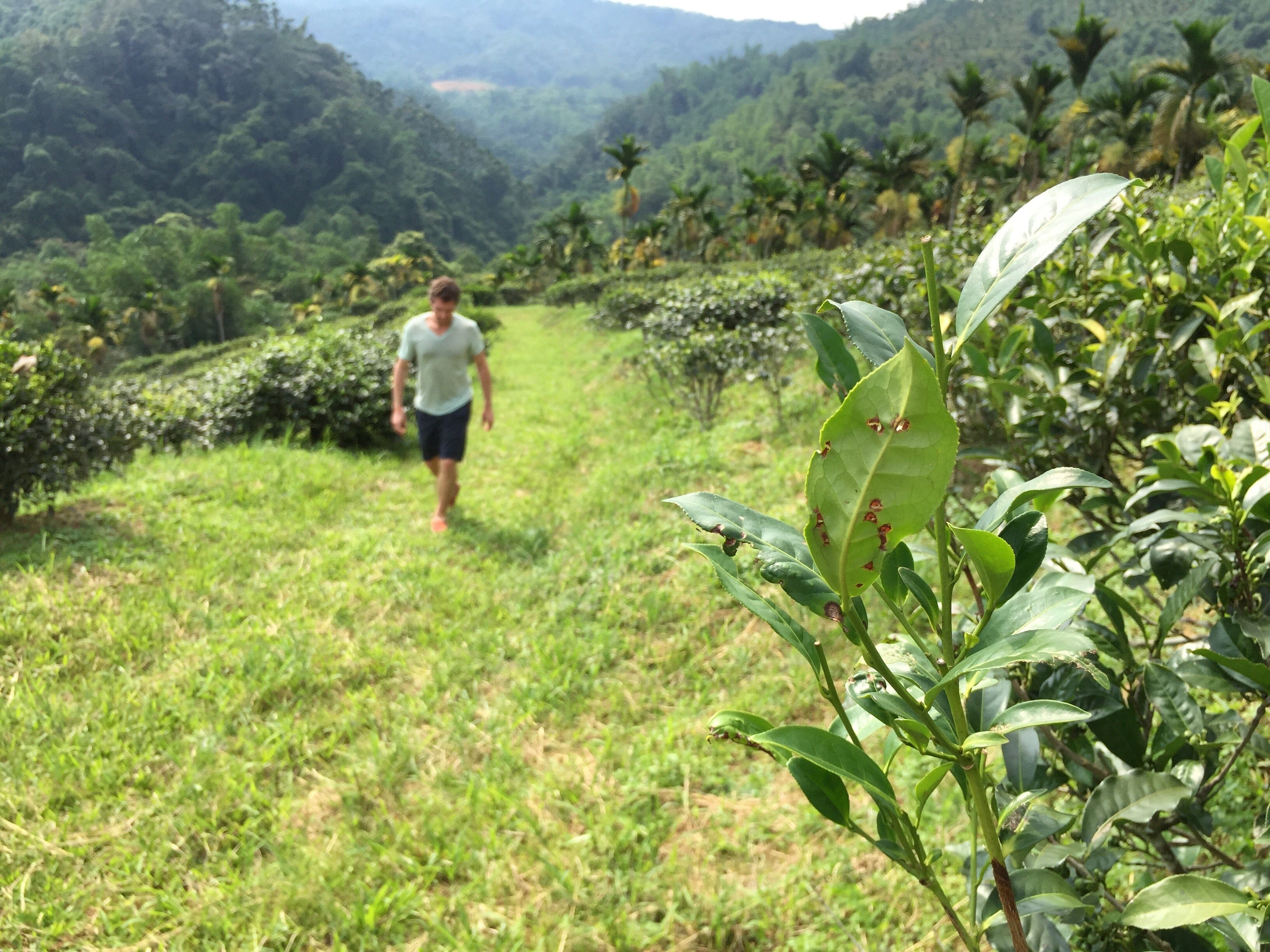Even if they’re not tea lovers, most people here in the States are familiar with black tea. From sweet tea in the south to the Earl Grey and Breakfast Blends sold in coffee shops, black tea is everywhere in America. What we call black tea in the West is called red tea in China because of the reddish color of the infusion (and will be referred to as red tea for the remainder of this post). Red tea rocketed to popularity in England in the 18th century, and remains to this day the most widely drunk tea in India, Sri Lanka and all of the West. In China, red tea makes up less than 15% of the country’s yearly tea production, but its quality is very high. This post will delve into the making and characteristics of red tea, and will then introduce purple tea, an exciting genetic variety of red.
How is Red tea made?
Usually, red tea starts off with leaves or buds that are a little more mature. These leaves are first withered, where they lose up to 60% of their moisture, then rolled, to break down the structure of their cells, releasing the enzymes that trigger oxidation. Then they are oxidized, dried, sorted and sifted.
Red Tea in China
There are several ways in which Chinese red tea is unique. First, the leaves are allowed to wither longer, which emphasizes the fragrance of the tea. Next, they go through a longer and slower oxidation process, which tones down the astringency of the tea while concentrating the flavor. Lastly, the sweet-tasting buds that make up the base of the tea are rich in amino acids and polyphenols, creating a tea that is smooth, sweet, less dry and less astringent than black teas elsewhere.
Red tea at Living Tea
Living Tea seeks out seed-grown, hand-processed Red Tea with beautifully shaped leaves and infusions that are best savored without any additives. We recommend letting the leaves open gradually with many short infusions, savoring the tea patience and inner spirit rather than gulping a single steeping. Generally, Red Tea is known for its robust "fully-oxidized" flavor profile, strong pervasive Qi (vital energy), mild sweetness and "awakening" quality. We recommend brewing it directly in a bowl or side-handle pot with water just shy of a rolling boil.
Now for Red tea’s sister: Purple tea. What is it?
Purple tea comes from the same tea plant as all the other types--Camellia sinensis. The purple color is a result of a genetic mutation originally found in small quantities of tea trees in southern Yunnan, China. These trees were found at high altitudes, and this greater exposure to ultraviolet light caused the trees to produce high levels of anthocyanin, a type of flavonoid with effects similar to antioxidants, as a defense mechanism.
Anthocyanin is not only responsible for the purple color of the leaves, but also for a long list of health benefits found in recent studies. This bio-active compound offers strong anti-inflammatory and antimicrobial activities, as well as the potential to suppress human cancer cells, improve eyesight, diminish dementia and protect against liver pathologies.
I’ve never tried Purple tea. What does it taste like?
Purple tea has a pleasant, sweet and woodsy flavor. It is less astringent than green and red teas because it contains fewer tannins. Gateway of Spirit, our House Purple Tea, is lively, floral and rich all at the same time, and is one of our most requested teas.

